'Operation Valdecañas': the reservoir that hid a big archaeological treasure at risk | Culture | EUROtoday
In 2019, a really extreme drought diminished the extent of Extremadura reservoirs to ranges not often recognized. The quantity of water gathered within the Valdecañas (El Gordo, Cáceres) didn’t exceed 20%. Thus, huge areas of cracked earth have been uncovered on this swamp whose building in 1957 flooded distinctive archaeological websites, together with the Roman metropolis of Augustobriga. The nationwide and regional administrations, confronted with the spectacular decline in waters, started a frantic race between 2019 and 2023 to rescue and research all of the historic materials that was being revealed earlier than looters looted it or the dammed ranges elevated. They did it: distinctive items of archeology have been rescued in time. Valdecañas is presently at 93% of its capability.
The Nature Protection Service of the Civil Guard (Seprona) performed a basic function within the Operation Valdecañas to cease the continual archaeological looting that was going down. Now, the Ministry of Culture and Sports has reconstructed what occurred throughout these 4 years of piecework within the report The administration of archaeological heritage in continental waters within the face of local weather change: the Valdecañas reservoir (Cáceres, 2019-2023). A megalithic dolmen, the entire cartography of Augustobriga, the restoration of three veton boars, Chalcolithic burials, Roman altars or cash and medieval board video games have thus been saved from predation.
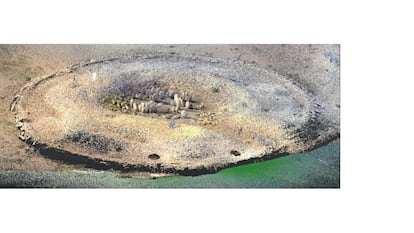
Experts from the principle Spanish archaeological establishments (General Directorate of Cultural Heritage and Fine Arts, the General Subdirectorate of Management and Coordination of Cultural Assets, the General Subdirectorate of the Cultural Heritage Institute of Spain, the National Archaeological Museum, the National Museum of Roman Art, the Altamira Museum and the National Museum of Underwater Archeology) have been alerted in 2019 “to rescue everything that the reservoir was going to reveal,” the report states. The archaeologists knew that the swamp setting “witnessed multiple cultures from the Paleolithic to the medieval period, which gave rise to an archaeological record of enormous richness.” As a consequence of the drought, they recall, “a management strategy for the emerged archaeological heritage was initiated with the aim of documenting, preserving and enhancing it.”
In September 2019, the Institute of Cultural Heritage of Spain (IPCE) obtained the primary details about the emergence of the Guadalperal dolmen, an essential megalithic advanced dated between the fifth and third millennium BC. C. The displaced technicians discovered themselves in entrance of a construction composed of greater than 140 granite slabs that type a corridor-type dolmen with a funerary chamber 5 meters in diameter, a hall nearly 10 meters lengthy and 1.50 meters large. The construction was flanked by a round ring shaped by quartzite bowls. It was studied and analyzed with new applied sciences, in addition to consolidated in the identical place to keep away from harm when the waters rose once more.
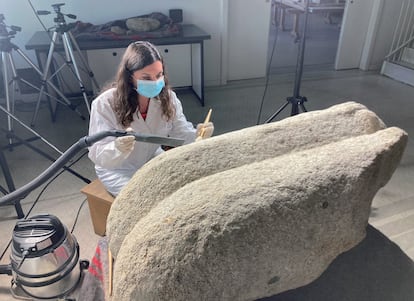
“As a consequence of the plundering that was being noticed in various areas of the reservoir basin,” the specialists level out, “it was also decided to carry out a series of archaeological interventions. [en torno al dolmen] with the aim of documenting and geolocating other nearby sites. This was the case of what is known as Valle Santo. In August 2021, 18 stratigraphic units were identified there and more than one hundred archaeological objects were collected, which made it possible to date a possible Roman rural settlement specialized in the production of oil.”
In the partitions of the late medieval convent of Alarza, which additionally emerged because of the receding water, a coin minted in the course of the reign of Alfonso In one other close by space, El Roncadero, two adorned Roman steles and an alquerque, a very fashionable board recreation in Europe between the twelfth and fifteenth centuries, have been additionally situated. They have been deposited within the Museum of Cáceres, the place they’re a part of its everlasting assortment. In the identical space, “they were georeferenced [también] several megaliths”, the research of which has not but been accomplished.
In 2021, archaeologists devoted themselves to an in depth evaluation of the city planning of town of Augustobriga (Talavera la Vieja, Cáceres), by means of intensive archaeological prospecting and finishing up 3D photogrammetry with drones. “These actions allowed the creation of a detailed plan of the urban layout of the ancient Roman city, and the registration of hitherto unpublished heritage elements, such as an ashlar with a fascination [falo divino] carved on an ashlar located in the hot springs,” they keep in mind.
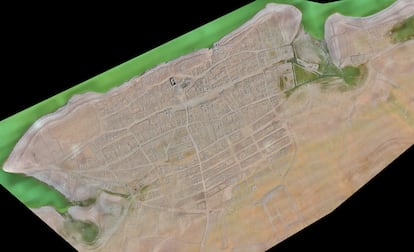
Archaeological interventions in Augustobriga, between 2021 and 2022, confirmed that town prolonged about 22 hectares, was walled and had a discussion board and public baths in its northern half. The city structure was organized round a big northeast-southeast street (decumano) and one other northwest-southeast (cardines). He municipality “It also enjoyed an aqueduct, sewers and large areas with housing structures.” Outside the partitions have been the burial areas and different building constructions linked to day by day life.
The investigation additionally made it potential to rescue a Latin funerary epigraph on one of many partitions of the Santos Mártires church, additionally uncovered by the drought. The inscription, though very eroded, has been capable of be translated: “Marcus Villius, son of Marcus, of the Papiria tribe, Emeritan, here lies.”
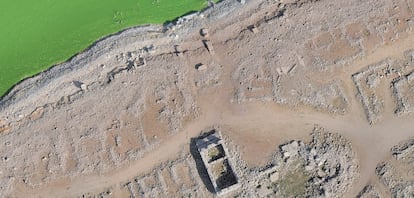
For its half, within the Alija fortress, on the banks of the swamp, two veton boars have been discovered. About two kilometers away from him, within the municipality of El Gordo, one other pre-Roman sculpture was situated, this time a pair of boars, one among them a feminine, with a size of 122 centimeters, a width of 65 and 670 centimeters. kilograms of weight. “This is the first documented boar sculpture in which a female specimen appears,” say the archaeologists.
The specialists additionally discovered a close-by grave of flagstones “that was partially disturbed as a result of looting. In it, numerous human bone remains could be seen with the naked eye, corresponding to an adult individual. One of the circular imprints seemed to be also altered as a result of illicit archaeological activity, with the stratum of its interior clearly disturbed, perhaps as a result of the attempt to search for a cremation grave and its alleged deposit there.”
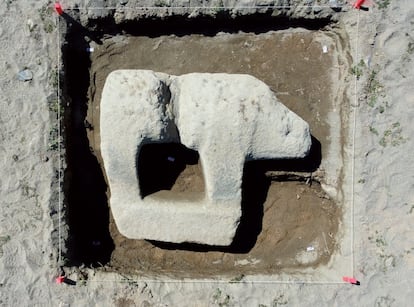
Isaac Sastre de Diego, basic director of Heritage, Culture and Fine Arts, summarizes the rescue operation with these phrases: “It was a doubly enriching course of. On the one hand, the intrinsic worth of a joint technique to safeguard a heritage that had been saved below water. On the opposite hand, the studying left by 4 years of collaboration between this course and the complete group of brokers, establishments and actors from numerous administrations, united below the target of preserving in the very best situations an archaeological heritage that belongs to everybody.” Almost all the material was transferred to the Cáceres Museum, where its managers currently proudly display it, not in an auction room in any country in the world.
All the culture that goes with you awaits you here.
Subscribe
Babelia
The literary news analyzed by the best critics in our weekly newsletter
RECEIVE IT
Subscribe to proceed studying
Read with out limits
_
https://elpais.com/cultura/2024-05-15/operacion-valdecanas-el-embalse-que-ocultaba-un-gigantesco-tesoro-arqueologico-en-peligro.html
